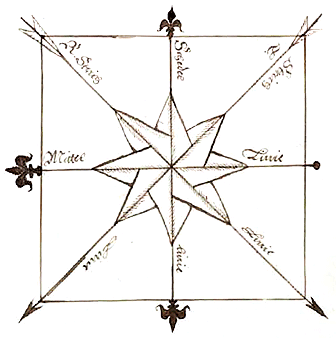Principal Cuts
From Scholar Victoria
(Difference between revisions)
(Created page with "Throughout his texts on the sword Meyer describes four principle lines of attack that form the principal cutting lines. He enumerates these principale cuts briefly in the sec...") |
|||
| Line 1: | Line 1: | ||
Throughout his texts on the sword Meyer describes four principle lines of attack that form the principal cutting lines. He enumerates these principale cuts briefly in the section on the longsword and provides further elaboration in the dussack section of the 1570 text, giving extra details not only on the cutting lines themselves, but also on the application of these cuts. | Throughout his texts on the sword Meyer describes four principle lines of attack that form the principal cutting lines. He enumerates these principale cuts briefly in the section on the longsword and provides further elaboration in the dussack section of the 1570 text, giving extra details not only on the cutting lines themselves, but also on the application of these cuts. | ||
| + | |||
| + | The lines of the cuts themselves are shown in the diagram below, taken from the 1568 text. | ||
| + | |||
| + | [[File:Meyer cutting lines.gif | center]] | ||
| + | |||
| + | Briefly, Meyer enumerates the principal cutting lines as follows. | ||
| + | |||
| + | * First is the vertical line through which a high cut (an [[oberhauw]] or [[schietelhauw]]) is sent. The is the scalp/parting line (scheittellini) since it divides the combatant into the left and right side. | ||
| + | * Second is the diagonal line downward from above (which he also calls the hanging line) through which we would send a [[zornhauw]] cut. Predictably this is referred to as the wrath line (zornlini) or the stroke line (strichlini). | ||
| + | * Third is a horizontal line called the thward or middle line (zwerchlini or mittelini respectively), through which middle cuts are sent (and possibly [[zwerch]] cuts as well). | ||
| + | * Finally we have the diagonal rising diagonal line which follows the same path as the zornlini, but comes up from below as in an [[unterhauw]]. | ||
Revision as of 13:32, 11 October 2016
Throughout his texts on the sword Meyer describes four principle lines of attack that form the principal cutting lines. He enumerates these principale cuts briefly in the section on the longsword and provides further elaboration in the dussack section of the 1570 text, giving extra details not only on the cutting lines themselves, but also on the application of these cuts.
The lines of the cuts themselves are shown in the diagram below, taken from the 1568 text.
Briefly, Meyer enumerates the principal cutting lines as follows.
- First is the vertical line through which a high cut (an oberhauw or schietelhauw) is sent. The is the scalp/parting line (scheittellini) since it divides the combatant into the left and right side.
- Second is the diagonal line downward from above (which he also calls the hanging line) through which we would send a zornhauw cut. Predictably this is referred to as the wrath line (zornlini) or the stroke line (strichlini).
- Third is a horizontal line called the thward or middle line (zwerchlini or mittelini respectively), through which middle cuts are sent (and possibly zwerch cuts as well).
- Finally we have the diagonal rising diagonal line which follows the same path as the zornlini, but comes up from below as in an unterhauw.
